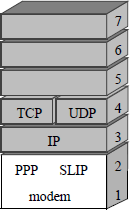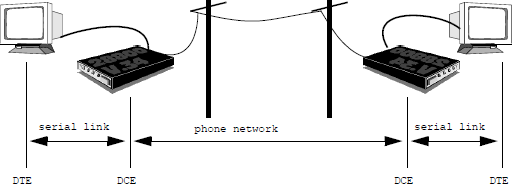Chapter 15
IP on Point-to-Point Links: PPP

Until now, encapsulation has been presented on LANs with Ethernet, or more generally MAC/LLC/SNAP encapsulation. These networks offer a large amount of free bandwidth. This chapter focuses on the transport of IP packets on point-to-point links. After a rapid introduction on modems, PPP will be introduced.
PPP links are not only used to connect the user to the Internet. This chapter covers the use of PPP on other networks, such as mobile telephony (3G) and core networks.
Historically, most PCs (Macintosh, Dell, IBM, Hewlett Packard, etc.) have included a serial interface. This interface is perfectly adapted and is an economic way to directly connect to the Inernet or to access the Internet through the phone network and a modem. New access networks, such as ADSL or cell phone networks, are increasingly replacing the use of the traditional phone network but the architecture and fundamentals are usually preserved.
15.1. Serial links
The protocols covering point-to-point links are essentially defined by ISO and ITU standards or recommendations. The terminology is sometimes different from that used by the IETF. Only a subset of solutions from these organizations is needed to link a computer to the Internet network.
Figure 15.1. DCE/DTE

The ...
Get Local Networks and the Internet: From Protocols to Interconnection now with the O’Reilly learning platform.
O’Reilly members experience books, live events, courses curated by job role, and more from O’Reilly and nearly 200 top publishers.

